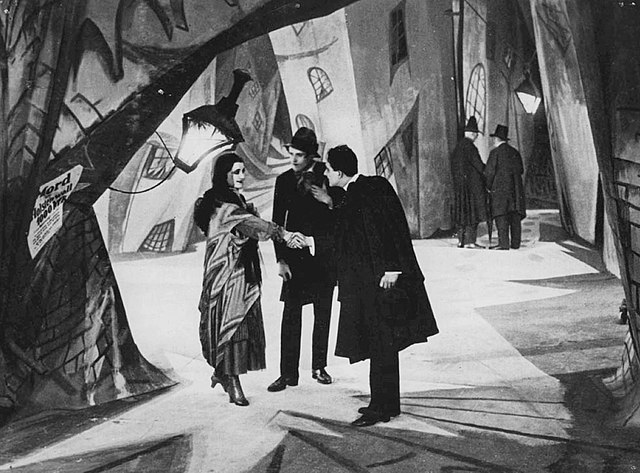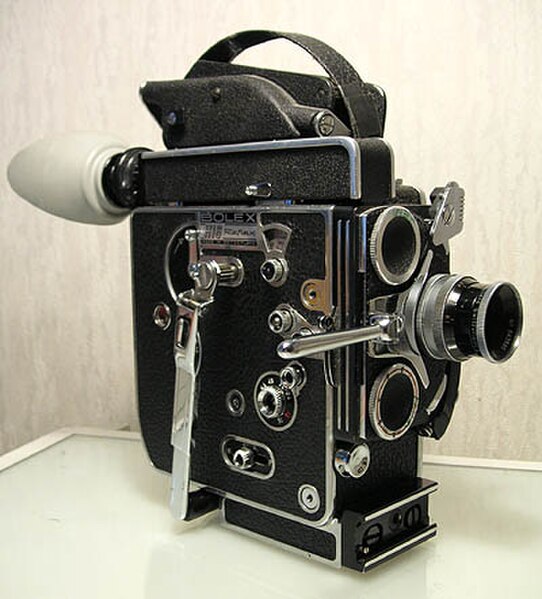Mise-en-scène is the stage design and arrangement of actors in scenes for a theatre or film production, both in the visual arts through storyboarding, visual themes, and cinematography and in narrative-storytelling through directions. The term is also commonly used to refer to single scenes that are representative of a film.
The distinctive mise-en-scène of The Cabinet of Dr. Caligari (Germany, 1920) features jagged architecture.
Mise en scène by Constant Puyo
A film – also called a movie, motion picture, moving picture, picture, photoplay or (slang) flick – is a work of visual art that simulates experiences and otherwise communicates ideas, stories, perceptions, feelings, beauty, or atmosphere through the use of moving images. These images are generally accompanied by sound and, more rarely, other sensory stimulations. The word "cinema", short for cinematography, is often used to refer to filmmaking and the film industry, and the art form that is the result of it.
An Anschütz electrotachyscope American Scientific, 16/11/1889, p. 303
A famous shot from Georges Méliès Le Voyage dans la Lune (A Trip to the Moon) (1902), an early narrative film and also an early science fiction film
Salah Zulfikar, one of the most popular actors in the golden age of Egyptian Cinema
This 16 mm spring-wound Bolex "H16" Reflex camera is a popular entry level camera used in film schools.






